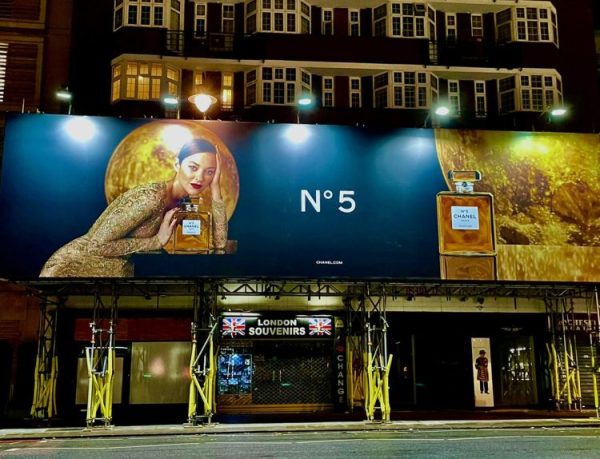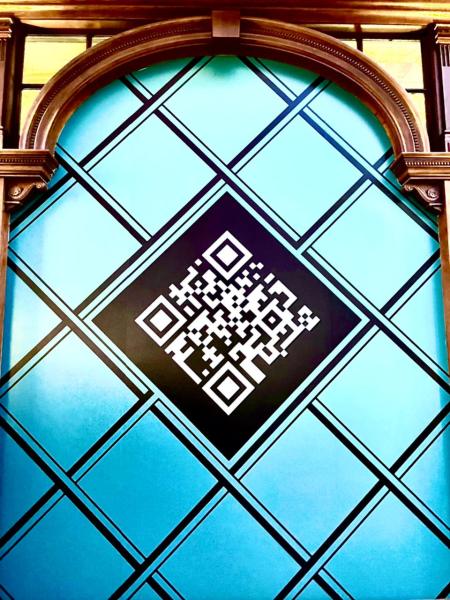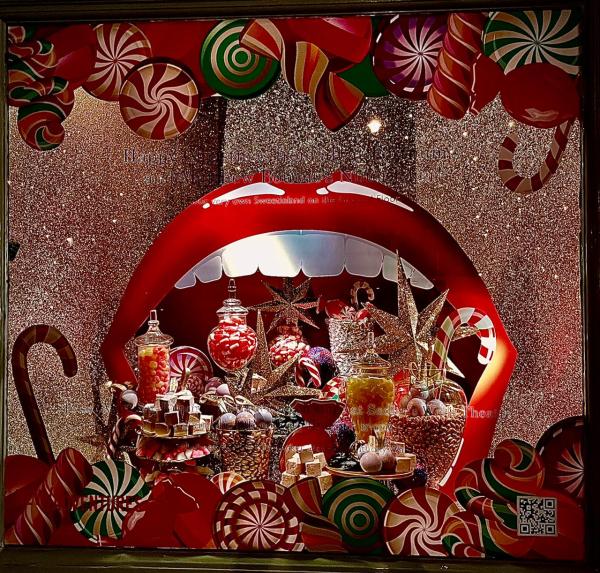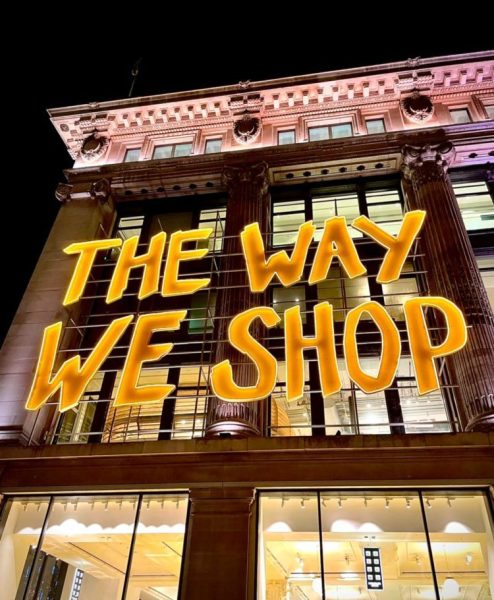Shopping as we know it is a relatively new phenomenon. Before the emergence of large department stores in the US, particularly with Marshall Fields and in the UK with Selfridges, the experience of shopping was very different from what we know today. These stores, guided by Harry Selfridge, transformed shopping from being something transactional into something experience based. The story of this development relates to themes of commercial practices, design aesthetics and female liberation.
In her book, Shopping, Seduction and Mr. Selfridge, Lindy Woodhead explains the state of shopping before the proliferation of multi-faceted department stores. She writes that “before Selfridge, window-dressing in London had been haphazard.” She also notes that “some of the bigger stores had a nominal display manager, but visual presentations were rarely planned to a theme and…in most cases, it was merely a case of showing the diversity of stock, which often involved putting one of everything in the window.”
 A sign above the entrance of Selfridges. (Express Photo by Mira Patel)
A sign above the entrance of Selfridges. (Express Photo by Mira Patel)
The story of Harry Selfridge, an enterprising young American, began in Chicago, where the advent of electricity created an ideal ecosystem for the Marshall and Fields employee to carry forward the concept of window dressing. According to Woodhead, shopping in the eyes of Selfridge, should be “both a visual and tactile experience, one best enjoyed in a moment of private self-indulgence and enjoyment.” His experiment was a massive success, with Marshall and Fields beginning with 15 tables and ending with 1500 customers a day, a year after Selfridge made his changes.
The aesthetics of a store
Before Selfridges, windows in London were usually used to store spare inventory and were a far cry from the elaborate displays we’re accustomed to today. When Selfridge first arrived in the UK, he famously went to a store to purchase gloves. The sales clerk presented him with five or six pairs for him to choose from. In that moment, Selfridge questioned why shops failed to display their products for consumers to choose from, and failed to make use of windows as a way to advertise the range of products they sold inside.
 A staircase inside Monki. (Express Photo by Mira Patel)
A staircase inside Monki. (Express Photo by Mira Patel)
When Selfridges first opened, according to Woodhead, “the store’s windows would tell their own story…resulting in window displays that “were visual masterpieces that defined the concept of creative window dressing ever after.” In 1910, Selfridge took things one step further. He licensed the famous Blériot airplane, the first to cross the English Channel, to be placed on public display in the store. Selfridge announced to the world that this airplane would be available for the public to view, free of cost, in order for them to witness “this wonderful, epoch-making machine.” The stunt, according to Woodhead, was a “classy, clever, extravagant, glorious piece of marketing genius, which at a stroke established Harry Gordon Selfridge as the showman of shopping.”
In the 1930s, high profile artists like Salvadore Dali and Andy Warhol capitalised on Selfridge’s early attempts to revolutionise window displays by designing shop windows of their own, thus commercialising a trend that began exclusively by Selfridges around 1910. By 1962, Liberty Department Store in London had implemented similar tactics, finding that window displays, minimal or otherwise, significantly increased sales.
In 1980, with the progress of technology, window displays took on another identity altogether. Today, store windows feature elaborate electronic displays, with some even incorporating QR codes for shoppers to access merchandise online.
 QR Code from a window in Harrods (Express Photo by Mira Patel)
QR Code from a window in Harrods (Express Photo by Mira Patel)
How people shop
From window displays, the next logical move was to fundamentally alter the way people shop. In the words of Woodhead, “the Selfridge philosophy was to first get them in, then to keep them there.” So, if the window displays were the anchor, the rest of the store was also designed to captivate and retain consumers’ attention. Selfridge introduced art demonstrations in store and later expanded into cooking lessons, make-up tutorials, art demonstrations and in-store promotions. According to Woodhead, at the time where there were no theatres of television, above all, Selfridge “gave his customers fun.”
 A colourful candy display from Fortnum and Masons (Express Photo by Mira Patel)
A colourful candy display from Fortnum and Masons (Express Photo by Mira Patel)
In his book, Shopping as an Entertainment Experience, Mark Howard Moss, explains why the spectacle of stores was so important towards attracting consumer attention. He states that “consumers, like viewers, willingly suspend their perceptions of reality and often enter into a world of pre-packaged spectacle.” Moss points out that stores often evoke a sense of nostalgia so that older consumers will feel a connection between the store and a memory they had as children. Additionally, he notes that “the merging of the physical environment, the space and all its trappings, together with an individual’s desire to become part of the process is both unique and powerful.”
Today, if one were to walk into a store, they’d see festive decorations on display, would experience a merger between the spatial environment and the psychological one and most importantly, one would view shopping as an act of pleasure and at times liberation, instead of something that’s purely done on a basis of necessity. Selfridge, according to Woodhead, “quite literally changed everything about the way Londoners shopped.”
Female empowerment
In an article titled Marketing and feminism in a historic perspective, Professor Pauline Maclaran, argues that marketing practices have helped “the social and political position of women.” From the 1850s onwards, department stores started catering to women’s needs by establishing reading rooms, cafes to powder rooms, thus offering women a safe space to interact with other women.
 From window displays, the next logical move was to fundamentally alter the way people shop. In the words of Woodhead, “the Selfridge philosophy was to first get them in, then to keep them there.” (Express Photo)
From window displays, the next logical move was to fundamentally alter the way people shop. In the words of Woodhead, “the Selfridge philosophy was to first get them in, then to keep them there.” (Express Photo)
According to Maclaren, department stores provided a “a new and anonymous public arena in which women could safely venture, one where it was seen as acceptable and respectable for them to visit without a male escort.” Maclaren goes on to note that department stores also featured as a meeting place for suffragists, with Selfridges in particular, advertising in suffragette magazines and organising displays in suffragette colours. According to an article by Sally Friedman, a noted women’s rights activist, “the department stores offered both opportunity and limitation.” While they offered women an acceptable space to gather, they also perpetuated the class divide between rich and middle-class women. Friedman argues that the stores were priced so much above the average woman’s capacity to spend, that they represented a space primarily geared towards the wealthy.
However, for ordinary women as well, Selfridges provided an environment in which women had a space outside of the home. Most women’s stores lacked basic sanitation facilities which meant that if they had to use the restroom, they would have to go to a nearby hotel. Selfridges changed all of that by introducing women’s restrooms complete with a nurse and a creche room. Thus, according to Woodhead, Selfridge “could have justifiably claim to have helped emancipate women” and allowed them to “experience shopping and be observed doing it without in any way jeopardising their reputations.”
 For ordinary women as well, Selfridges provided an environment in which women had a space outside of the home. (Express photo by Mira Patel)
For ordinary women as well, Selfridges provided an environment in which women had a space outside of the home. (Express photo by Mira Patel)
It also embraced taboo products like cosmetics and lingerie that were previously detached from the public space. By displaying these products for everyone to see, Selfridges catalysed their transition into the mainstream. According to Friedman, “it’s hard to imagine now just how curtailed the lives of middle-class women were in the early part of the (20th) century, where to be seen alone in the streets was a risk to your reputation.” Selfridges not only allowed women to access public spaces but also embraced the concept of products deliberately catered to women and their needs.
As technological innovations progress, services such as department stores are at risk of being rendered obsolete. Some would argue that digital stores further emancipate women by allowing them to shop from the comfort and safety of their own homes. The effects of digital transformations will only be clear in hindsight. However, what cannot be argued is the fact that department stores were a fundamental if only temporary revolution in the way we shop.

